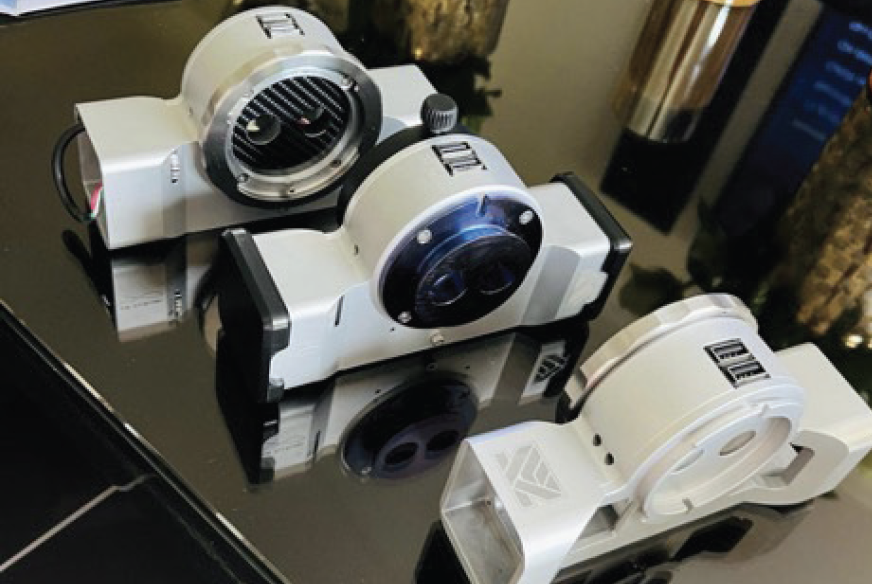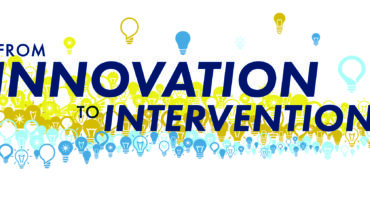

The process of innovation often poses unexpected challenges. As many who have been down this road will express, when ideas are born, they seem simple. The journey begins, and the process progresses until suddenly there is a major setback. It feels like everything is going pear-shaped. The viability of the whole project is questioned.
The innovators around us—those who have succeeded—have a lot in common. They are tenacious and, like a dog with a bone, do not let things go. (Yes, we are looking at ourselves.) Even when it feels like things have fallen off a cliff, the subconscious mind persists, a possible solution arises out of the blue, and progress is made until the process starts again. We take two steps forward and sometimes several steps backward only to leap forward again. The story we share here illustrates the process and provides some lessons for those wishing to pursue an idea or invention.
LESSON NO. 1: INSIST ON MUTUAL RESPECT AND INTEGRITY IN ANY PARTNERSHIP
Always searching for better ways to do things, both of us have produced all sorts of ideas. Some have been developed in collaboration with ophthalmic manufacturers and proven useful, mostly on a small scale and with no personal financial benefit.
Just before the COVID-19 pandemic began, one of us (T.W.) heard about a screen that provided a 3D view without the need for glasses or a headset and thought it might be useful for surgery. The device was invented by a local business that develops and manufactures devices for imaging and measuring industrial components. The key question was whether the device could provide high-resolution images without latency.
We decided to work alongside the company with an agreement to work as a joint venture rather than act as consultants. We invested considerable time and effort in advising the company and felt confident about what could be accomplished. We presented a modification of the device and its potential at the AAO/ASCRS Eyecelerator meeting in 2020. When it came to finalizing the joint venture, however, we found the proposed terms unfair and exploitative. Rather than partner with the company on a joint venture, we established our own company, Infinite Medical Ventures, with the intention of buying the modified development from the supplier, rebadging, and selling it. The strategy did not work well, mainly because our relationship with the company had deteriorated. We eventually cut ties and walked away. In hindsight, we should have seen the warning signs earlier.
The experience taught us that a successful collaboration requires all involved parties to demonstrate integrity and treat each other with mutual respect and fairness. If relationships are strained early, they are unlikely to improve over time.
LESSON NO. 2: LOOK FOR ALTERNATIVES INSTEAD OF QUITTING
We were left with a company but no product. Having worked with the other group for more than a year, however, we were enthusiastic about developing our concept. After some navel gazing, we ambitiously decided to move forward. Our principal goal was to create an affordable device that was easy to use and could change the practice of ophthalmology. We set out to develop a 3D glasses-free visualization device.
Motivated by difficulties encountered during the pandemic, we targeted a telemedicine option using 3D visualization on a slit lamp. The difficulty was finding an alternative viewing device. We looked at the gaming world and decided that headsets, although an option, would not be attractive in the clinical space. We discovered a recently released 3D tablet (Lume Pad, Leia) with fair resolution but could not figure out a way to live stream video with it.
Next, we found a display unit that had just been released by a Japanese company and was available only in the United States and Japan. The company loaned us one. We were impressed with its 3D visualization capability but unsure how to use it to live stream 3D video. The company’s technical advisers indicated that live streaming in 3D could not be accomplished easily, if at all, and put us in touch with myriad developers who felt similarly.
One of us (T.W.) asked academic colleagues at the University of Surrey for their opinions. They were able to achieve fairly good resolution for viewing 3D surgical videos without glasses. We then recruited a gaming developer who created an application with markedly improved resolution that could take high-resolution 3D still images and record video in 3D for later viewing.
These efforts showed us not to give up but to look for another way when obstacles arise.
LESSON NO. 3: BE RESOURCEFUL
Another issue was trying to develop a beam splitter with dual 4K input. We cobbled something together on a slit lamp to demonstrate proof of concept. To ensure the device’s affordability, we felt that it should be compatible with all slit lamps and microscopes and easy for the end user to implement (ie, with minimal need for installation engineers).
We needed collaborators with expertise in other fields. We recruited an optical scientist who worked at the Space Agency. Using optical design software (OpticStudio, Zemax), we ultimately managed to develop a relatively compact optical device with optical prisms and 4K cameras. The components were easily sourced, but we needed an engineer who could put together a prototype. We sought the advice of Ray Rockley, with whom one of us (S.M.D.) had worked on developing surgical instrumentation many years earlier. At the time we spoke with Ray, he was heavily involved in developing components for Formula One racing cars and aerospace. He is an expert in computer-aided design and 3D printing. When we explained what we needed, he said, “I can do that for you, mate! Love where you’re going with this and happy to help.”
Developing the beam splitter chassis was a bigger challenge than we had expected. After almost a year’s work, we have what we believe is the final version, which accomplishes our goal of plug and play (Figure 1).

Figure 1. IMVIS beam splitters compatible with different slit lamps and microscopes.
Ray used his engineering skills and knowledge of materials to encase the display and computer system. We employed three students from the University for the Creative Arts to design the casing and enhance the graphical user interface to emphasize the 3D capability of the screen. We now have a prototype for major in-field testing (Figure 2) and plan to manufacture several more. Our next step is to develop a way of bulk manufacturing the chassis and case for the final product. We hope to have a commercial product available in the next 6 months and a pipeline for future developments.

Figure 2. IMVIS glasses-free 3D display.
This phase of our journey taught us to be resourceful. Innovation requires the input of people with a variety of talents.
LESSON NO. 4: PREPARE FOR THE TIME AND EXPENSE OF INNOVATION
We applied for a UK government grant but were unsuccessful. We considered further applications and funding from others, but as ophthalmologists with busy practices we decided it would be best to continue funding the development ourselves and avoid spending more time writing detailed pitches to potential funders. The time and money we have invested thus far have been considerable, and now we must scale up our operations and seek regulatory approval.
Development is an expensive process, requiring much more funding than we initially anticipated. We have learned that it is wise to consider cost well in advance. Innovation requires an inordinate amount of time and trouble. For us, the excitement of the creative and problem-solving process is reward enough.
We intend to launch a Kickstarter campaign. Our plan is to provide the device to early adopters and opinion leaders at a discounted price, garner feedback, and gauge interest to consolidate our pipeline. Those interested may contact us at enquiries@infinitemv.com.


